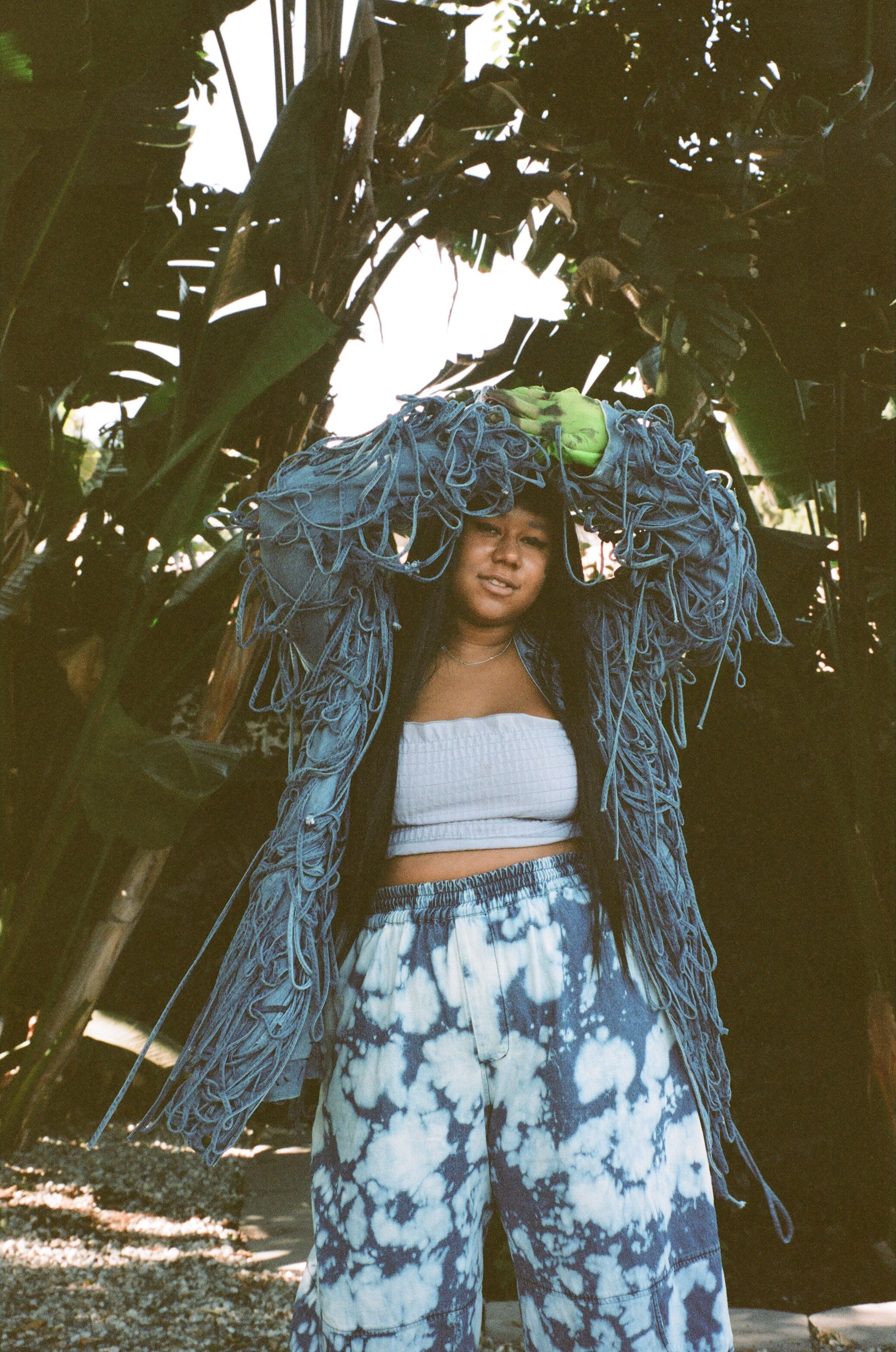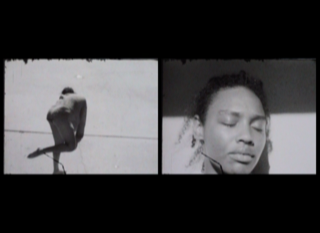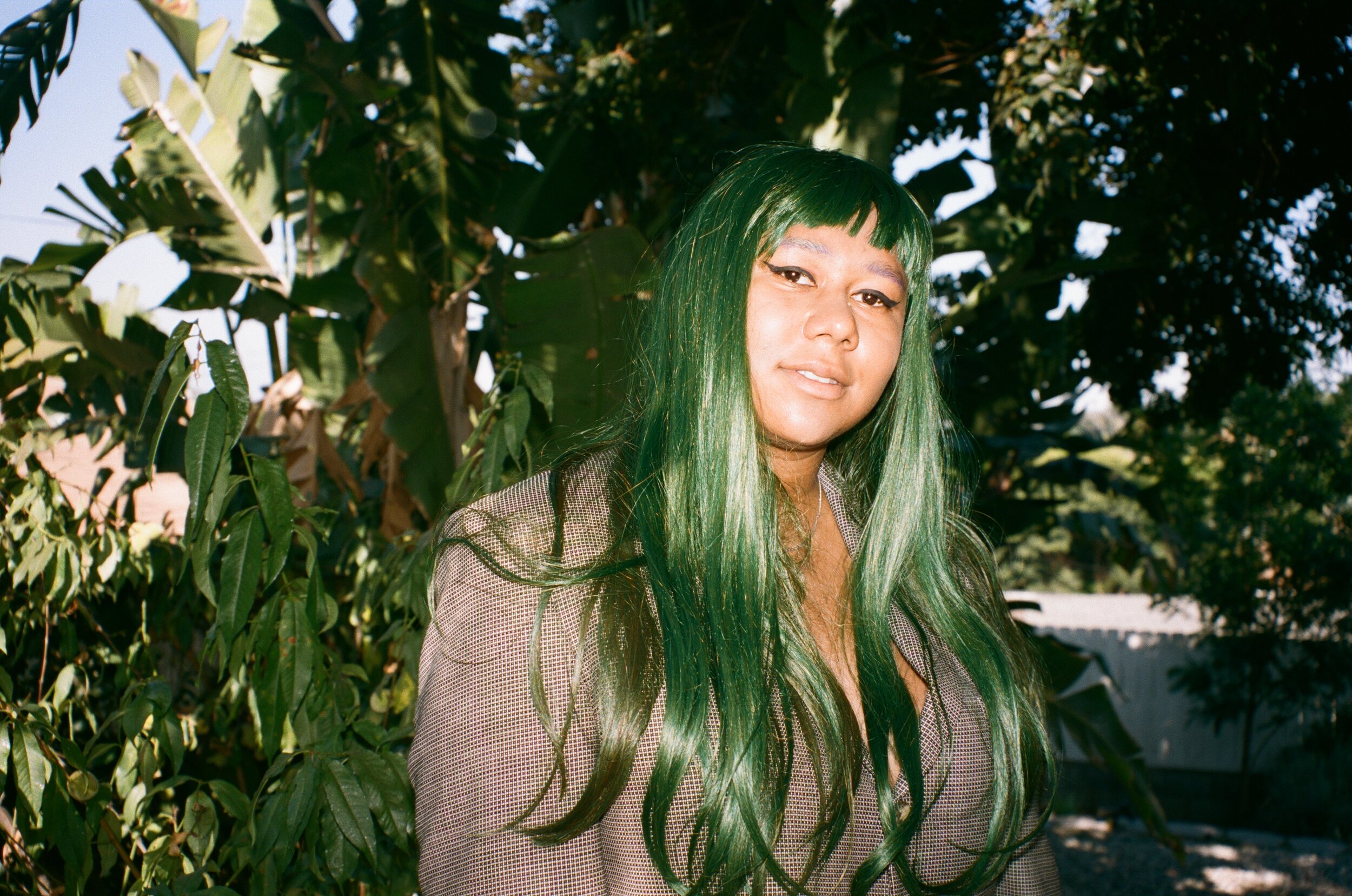Alima Lee, Multimedia + Video Artist
Interview by Bridget Botchway
Photos by Dana Boulos
Alima Lee has vision, passion and the keen power of observation. She is a Harlem native that directs, DJs, documents and simply creates. Alima's works have been screened all over the world, including the MOCA, but her focus has been and will always be uplifting and paving a way for her community.
How would you write your own bio? How did you get started in film and art?
Well I've kinda always been in the realm of film because my mom is a filmmaker. She used to make music videos and that’s how I started making music videos. I feel like she didn't talk 'bout it much—it was before I was born. Then I started just going through her shit. I found tapes and it was music video reels and things she taped that were on [Yo! MTV Raps]. She did videos for LL Cool J, Whodini and Al B. Sure! I've always loved the Al B. Sure! music video, "Night and Day," and then I found out she made it and I was like "what the fuck!”
It was super inspiring to have her talk to me when she opened up. I was in my early 20s and my partner at the time was a musician and we decided to make a music video. I bought a videocamera and we made a music video and my thing was just making music videos. It was fun because it was these smaller, short art films. It was my way of using a song as a narrative. It helped me get into short filmmaking and art filmmaking without the need for a persona. I was taking my VHS camera everywhere so I went to Chicago to visit my cousin and I was really into footwork and juke music at the time.
Kelsey Lu, “I’m Not In Love,” 2019. Courtesy of Alima Lee.
I'm originally from Chicago and we are not that welcoming to outsiders, but it felt like you were from Chicago the way you took the photos, it felt intimate...
I think that’s the part of me that is coming from a documentarian standpoint. I feel like that happens a lot, specifically non-black people in black neighborhoods. I was an outsider just showing up, just saying, "hey can I take a video?" They were sweet and took me in at these dance battlegrounds. They did not feel threatened by my presence at all, even though I'm not from there. I just wanted to share myself and my craft with the community. They were so welcoming to that and that is what makes documentarian work worth it. You're not using the person; it’s a mutual relationship, you want to share and I want to document it.
How did your environment growing up affect the approach to your work?
I'm from Harlem and then when we left NYC to move to LA, it was very white. Laurel Canyon and Studio City were very valley, very not me. So I assumed this position as observer. I didn't fit in, around mostly white kids in my advanced classes. I could only get so close so they didn't bully me but I never hung out with them out of school. I was an observer. In my old neighborhood in Harlem, near 125th and Lennox, I felt connected but it’s not my home anymore. I didn't assert my presence or dominance and from a young age it was ingrained in me to observe and not to be noticed. I like being in the background; participating but not dominating. It helps me step into documentarian position. I really enjoy the whole process.
What was your experience like being a resident at the Echo Park Film
Center?
They have analog, 8mm and 16mm [film] and I focused on analog filmmaking. I was there for 2 months and they gave me $1,000 which I spent almost completely on film. I made 5 films while there. They didn't really tell me how to film, just how to use a camera and analog cameras are so not threatening looking. When you take them into a place you’re not from people are more intrigued by what you say instead of [being distracted by] a huge digital camera [also] it just wasn't necessary to capture what I wanted. There I started making more short films and documentaries.
“Flesh to Spirit”, 2019. Courtesy of Alima Lee.
And it was there you made 'Nia' and 'Garden', can you talk about those films?
'NIA' is about a little black girl from South Central [LA]. They really let me into their home and her thoughts. I left her alone with a tape recorder and microphone and I taught her how to use it by herself. I took what she wanted to tell me and based the film on it. I shot it on 16mm and 8mm so it looks like a really old period piece. [Nia] is talking about things that are like happening now: gentrification in her neighborhood and how her father was taken to prison for a non-violent altercation. I have always been a radical person where I believe in abolishing prisons and I had no idea [Nia] was going to talk about it .
That summer I made 'Garden' with my friend and that was coming from a place of feeling distant from myself. I was finally facing a lot of traumas from past and distancing myself from a distracting relationship. It’s so easy to not check in on myself. I was feeling so depressed, I wasn’t able to get out of bed, then I said, "you know what—let me resonate on this" and make a film about it, maybe that will help me get out of it.
I called my friend and told her “I wanna capture it with you", and she said she was feeling the same way. I had just met her recently we weren't even that close. The film is about rituals and how hard it is to do daily rituals for yourself; even in the mundane, it can be an act of beauty and self-sacrifice. Everything I was feeling was translated in her actions. It was insane because we didn't talk that much before but she picked up on everything and it was a beautiful experience. After that I thought "i love filmmaking—this is what exactly what I have to do.”
“Garden,” 2017. Courtesy of Alima Lee.
Wow, so basically “Garden” was your therapy?
It's really the only way I can communicate at this point. I can write. I went to a writing high school that is social justice based and I was gonna be a journalist but I just didn't feel like my written word could translate everything I was feeling inside. This was the first film where I felt 100 percent me and I could express myself and then be OK with people watching it.
I really loved "Garden”. I saw Garden at a Black Radical Imagination
screening. What was that tour like?
That was right after I finished my Echo Park residencies and Darryl and Janelle (Black Radical Imagination Programmers) came [to the final screening] and wanted to feature my film in the series. I've never been apart of anything like that and it exposed my work to a huge audience in an institutional space which I was so far away from and not connected to. I had my work screened at the MOCA and that set the tone for how I wanted to show my films. It felt comfortable being in an art space, and it traveled to 10 different places. My mom went to see it in the Smithsonian African-American museum in D.C., the Tate in Britain and my friends in London got to see it. I really like having my work framed in that way, it’s more experimental and that’s why I don't like a traditional theater setting.
Where do you see yourself fitting in the film industry ?
I don't really connect with the [traditional] film industry. I'm coming from a more artistic standpoint and in art spaces a lot of the context is not laid out for people so I feel more comfortable with [my work] being in a space where people have to think more about it. Contextually, it works better.
But I also have a problem with privileged art spaces. I want to make my work available. Sometimes they are in places that are cut off from the very audience I made it for and that's why I made 'Notes on Intimacy' (an art show in November 2019) in Washington Heights, down the street from the Underground Museum. Because, this is the audience I'm speaking to and for. So, if you want to see this piece and you're from Hancock Park, it's not for you, it's for us. That is why I am trying to take into consideration: communities and availability, "who is able to see it?" I feel like museums are often cut off and it’s not fair.
So, recently I put everything online.
Future plans for you?
At the moment, I’m working on a new body of work using new materials since I’m not shooting much anymore and utilizing photos and videos I previously shot for other projects that were never used. The series is entitled “eroticisms” which I look at as a close examination of black intimacy. It’s a multimedia installation incorporating resin sculpture, tile sculpture, cyanotype photo printing and video. I’m applying to a few artist residencies and grants and ultimately hope to go back to school sometime in the near future, but nothing seems real right now. It’s hard to envision a future beyond three months. Everything I’m creating now is for my own catharsis.






